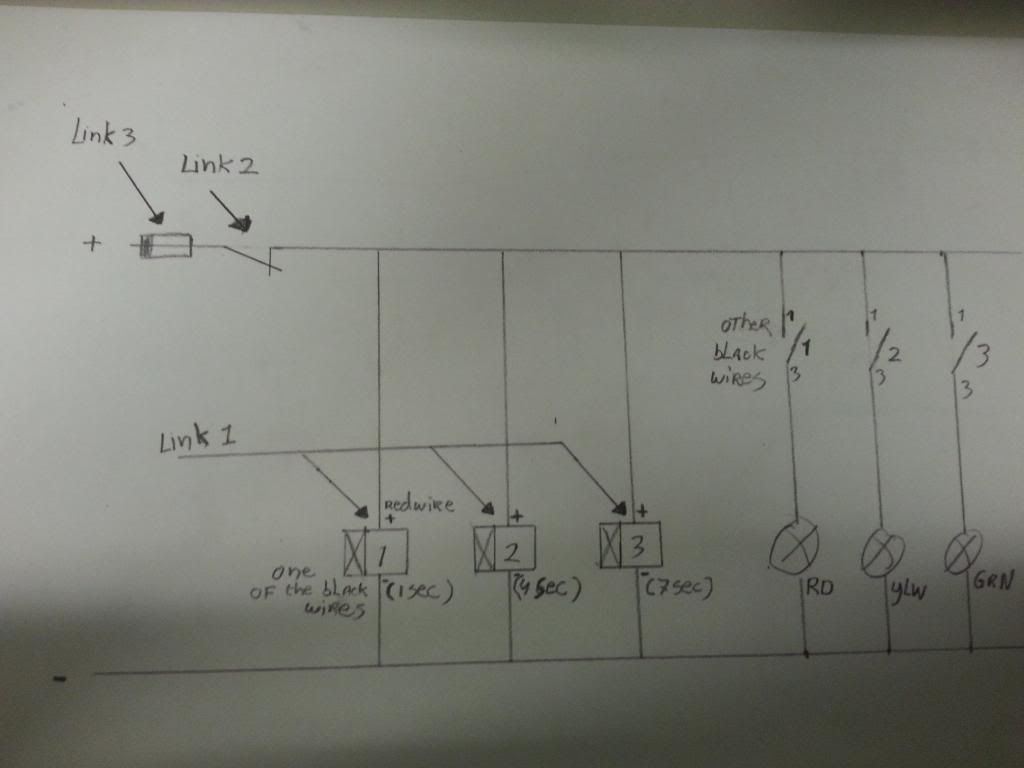
this is the scheme I came up with, I'll get into the lights later today then. After that I can calculate the required fuse.
Let me know if you understand it

macky_6 wrote:Hi, welcome to LG
You have to excuse these 4th Gen drivers, they ain't around girls much
Edit*Fons[DutchGuy] wrote:This light should be perfect:
http://www.ebay.co.uk/itm/Tower-Signal- ... 4ab06abe1c
Link 3 (Fuse holder):
http://www.ebay.co.uk/itm/In-Line-MAXI- ... 2a14abfb8d
Just pop in the lightest car fuse you've got laying around or can get hold of. I'm estimating that the complete thing uses around 600mA so any fuse higher than that number should work, I wouldn't go for bigger than 5A though
macky_6 wrote:Hi, welcome to LG
You have to excuse these 4th Gen drivers, they ain't around girls much
This is true (it helps that I'm a huge arduino fanScott560 wrote:Id go down the microcontroller route. That way , you can change the program to suit the needs, and tweak as time goes by. Also, you never know when the next project will come along that needs something a little more complicated.
Admittedly purists would say its overkill for some sequenced light patterns, but why make life hard? This is easy to implement.
so:
http://www.ebay.co.uk/itm/Arduino-UNO-R ... 27d380f981
This is the microcontroller, USB interface etc, this is what you program, and you can read inputs and define outputs on all the pins. You'd use this to sequence the lights in any time pattern you wanted.
then just use something like this to switch the 12v to the lights...
http://www.ebay.co.uk/itm/New-Style-5V- ... 5653128cef
just needs a little wire, some soldering, and a modicum of computer literacy ('blinking lights' are among some of the first and easiest examples to follow).
Give us a shout if you want some guidance. you could even make a fully fledged drag strip setup with the same microcontroller (to include timing, LED display read out etc).
macky_6 wrote:Hi, welcome to LG
You have to excuse these 4th Gen drivers, they ain't around girls much